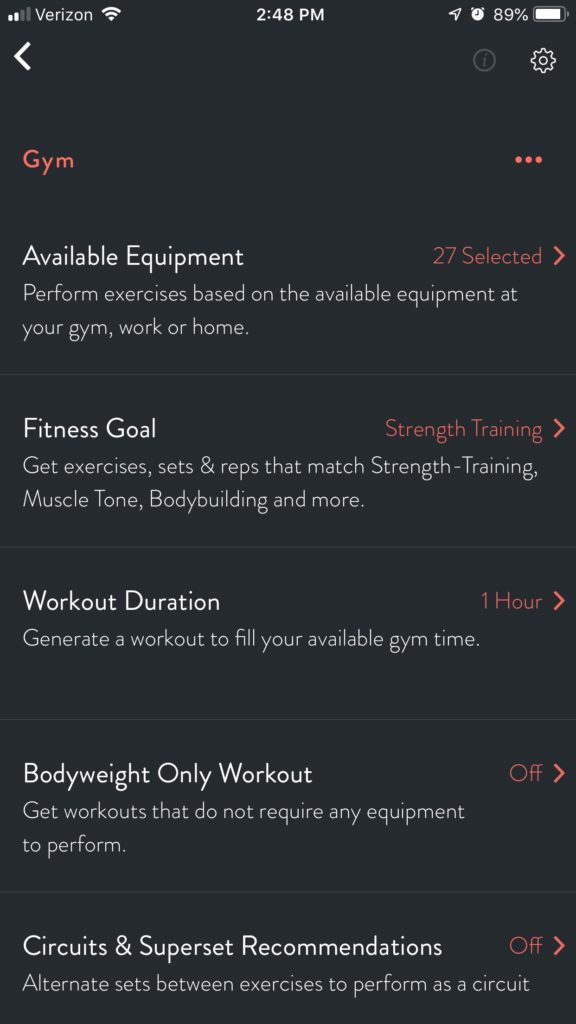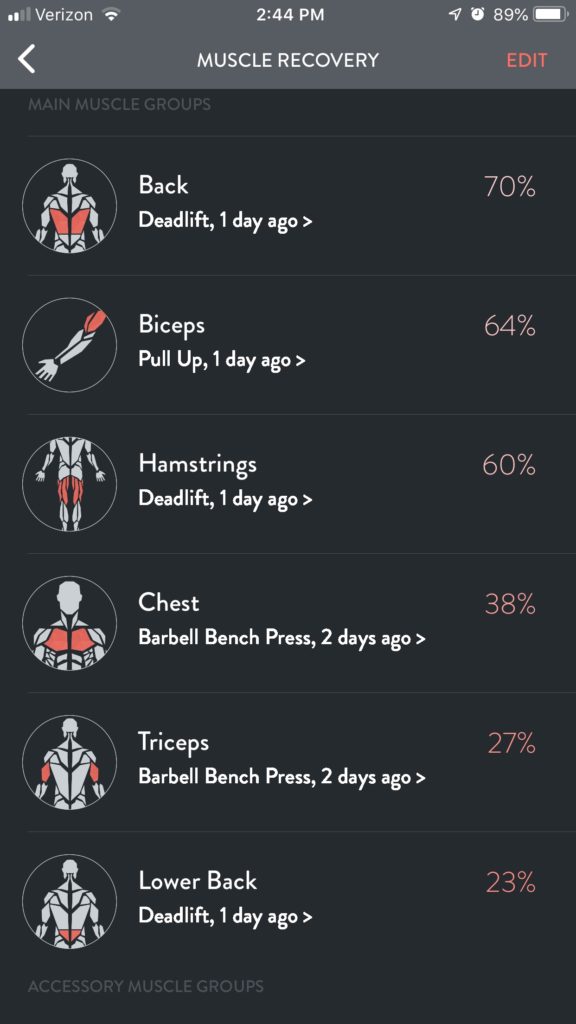Can Artificial Intelligence get your body fit? I have been weight training for the last year and have made some modest gains. For all the time and energy I’m putting in though, I’m fairly certain I’m wasting a lot of effort. I can tell if I’m working hard or not, but I question whether I should be working out more often or less. More intensity or volume? Am I overtraining? Short of getting a trainer to supervise every workout, I only have my own experience and diligence to tell me if I’m doing it right. Fitbod brings a bunch of cool technology to this problem and delivers it in a fun, easy to use and empowering app. I’m going to find out if artificial intelligence for fitness can make a difference.
State of Decay
I am 51. Just hitting the weights and watching what I eat has not kept me from declining strength, consistent fat gain, accumulating persistent pains and worsening vital signs pointing to middle-aged cardiovascular disease. Trying to live healthier and hoping for the best hasn’t been a recipe for change. Something a bit more methodical and measurable is necessary. I have been consistently exercising for at least one day a week for the last thirty years. Active commuting by bicycle has ramped this up for the last five. When I stopped bike commuting, my fitness declined noticeably. I decided that i had to get more methodical in exercising. I needed to pick a weight program, track my nutrition and ramp up my running to forestall if not reverse the direction of decline. You can see my journey over the last year here. The biggest change was starting a weight program.
Weight Training
Weight training evangelists pitch various weight programs but the more prosaic fitness experts say that any structured progressive weight program that uses heavy weights will get you results. I started with a program I found on reddit called Stronglifts 5×5. Stronglifts is a beginner program that progressively adds intensity by increasing weight in 5 main compound lifts, the deadlift, squat, bench press, overhead press, barbell row. It is based on a well-known methodology very like one proposed by Mark Rippetoe called Starting Strength.
The distinguishing feature is fast linear progression. You add weight every workout, if you can. This is great when you are just starting out and the weights are light. You then add accessory exercises to the main lifts to help build up the smaller muscles. There’s an app for that and I found two which worked well. They track your workouts and progressively add weight if you complete all the sets and reps that you are programmed. All this works great if you stay on the path. The problem comes in when you stray. Not from your own fault either. For example, when you get injured, or you are training for a race. Then you are pretty much off plan. Fit bod solves that.
Fitbod
The app has a bunch of splits and programs built in. You tell it what you want to do: body build, gain strength of gain fitness. Decide how often you want to work out and for how long. You then tell it what kind of equipment you have available. Fitbod then crafts a work out for you. Programming in your workout plan is a snap. Fitbod has some standard weight training programs built in such as Push-Pull-Legs andUpper-Lower.


Follow the Program or Build Your Own with help from AI
You can also build your own program starting with a couple of foundation exercises and the app will fill in some more to exercise your other body parts until it has filled in the hour or so that you told it you had to exercise. Or, you can tell it what body parts you want to hit and it will put together a workout. Everything is customizable. You can tell it what exercises you don’t want to do and it will substitute something equivalent or make some suggestions. I haven’t taken many suggestions having been focused on the programs I have already started, but when I am completely gassed and can’t stick to program, just hitting the button and asking it to surprise me has yielded some interesting workouts.
For my first workout, I already have a program that I wanted to use fitbod with. Entering the sets and reps for the exercises on the four days of the program took less than five minutes. The interface takes a bit to get used to, but whatever challenges there are in the UI, the customization options make up for. You can fix just about anything you get wrong including correcting previous workout logs. I haven’t had the chance to use all the functions yet, but I have logged 17 workouts in the last two weeks.
Recovery: The special sauce
The recovery functions. After every workout, the app calculates how fatigued each of your main muscle groups is. It then recommends exercises for your next workout that work on the muscles you have not exhausted. This is awesome. In addition to my main lifts, I want to do some accessory exercises to strengthen the helper muscles. The app will automatically make suggestions based on the amount of fatigue in your muscle groups.

I’m always looking for variety and I want to gain strength evenly. I won’t see the results for a while, but I love this function. I also believe that it may make Fitbod a killer app. Much like the automatic segments in Strava are the killer function that enables all the user engagement in that app, I think recovery is the essential function that makes Fitbod stand out from all the other apps. If this sounds like a full-throated endorsement of Fitbod, it is. But there’s more. Look for my next post on using Fitbod with Strava.

1 thought on “Fitbod App – Artificial Intelligence for Fitness”
Comments are closed.